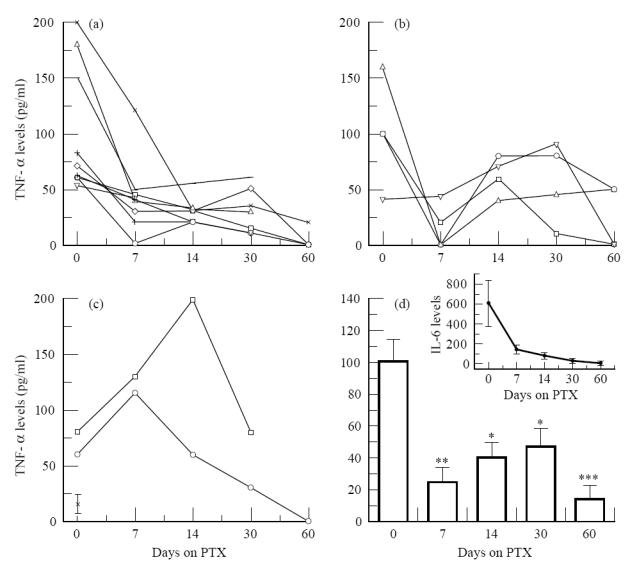Fig. 1.

Levels of TNF-α were assayed in the serum of 15 reactional patients who had been treated with 1200 mg pentoxifylline (PTX) daily for a total of 2 months. Serum was collected at the onset of the reaction episode and during treatment with PTX. (a) TNF-α values were promptly reduced within the first week of treatment (n = 9). (b) In four patients, although systemic symptoms were impaired by PTX, baseline serum TNF levels rose again in the course of PTX therapy. (c) There are two patients who were refractory to PTX. Closed symbols represent the period when treatment with thalidomide and/or steroids was initiated in order to control the inflammatory manifestations of reaction. Cut-off value for positive response = 45 pg/ml, which is 3 s.d. above mean values found in (*) healthy donors (n = 10, mean ± s.d.). (d) Serum TNF-α levels of reactional leprosy patients. Data are mean ± s.e.m. of 13 patients. *P < 0.05; **P < 0.01; ***P < 0.005, significant differences compared with levels obtained at the onset of the reactional episode (day 0). Variations in TNF levels between 7 and 14 or 7 and 30 days of PTX therapy were not significant (P > 0.05, Friedman anova test). Inset: levels of IL-6 in the serum of these same patients assayed before and during treatment with PTX. Data are mean ± s.e.m. No significant differences in mean IL-6 were noted (P > 0.05, Friedman anova test).
